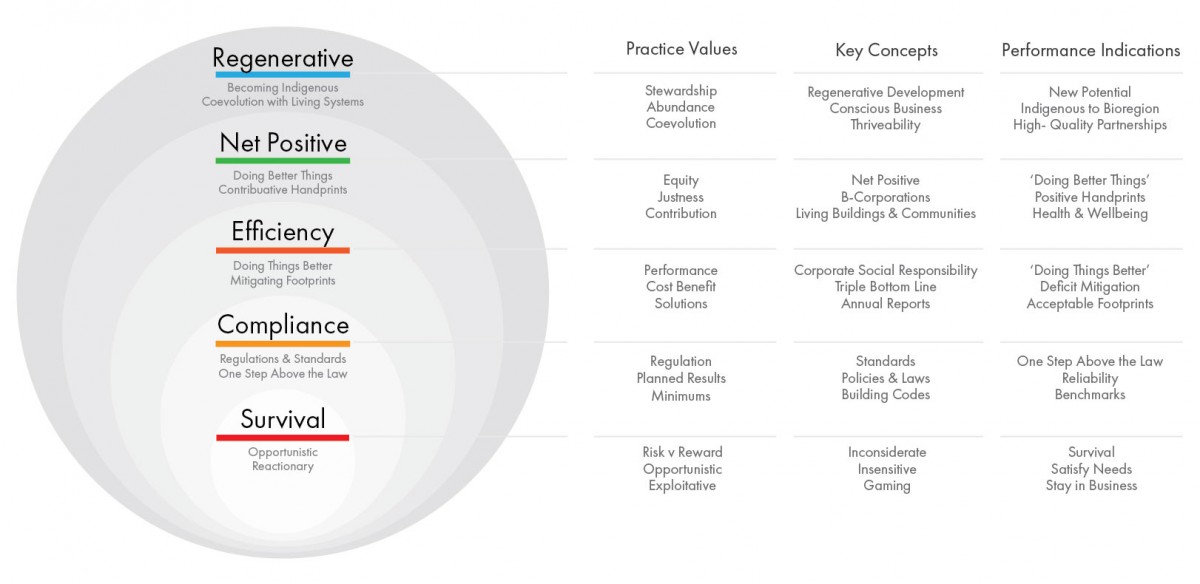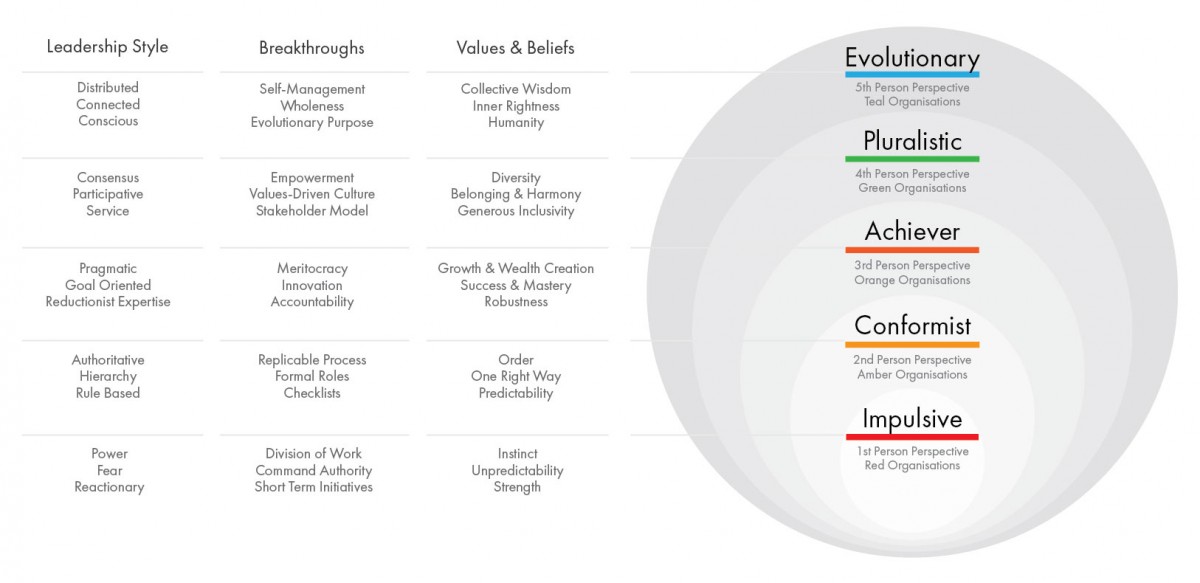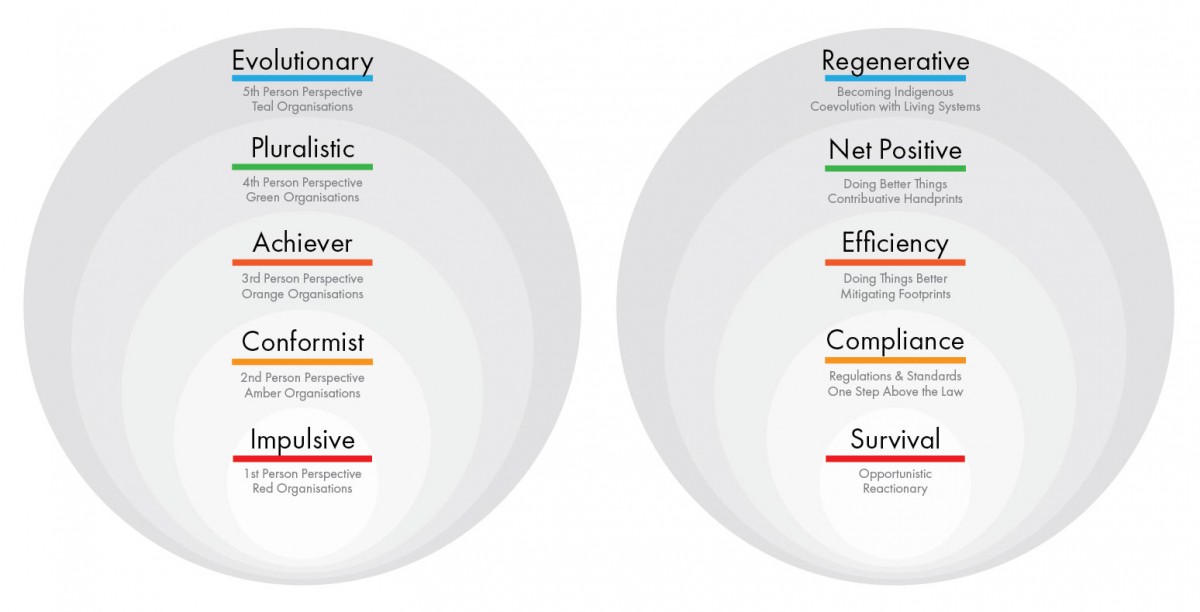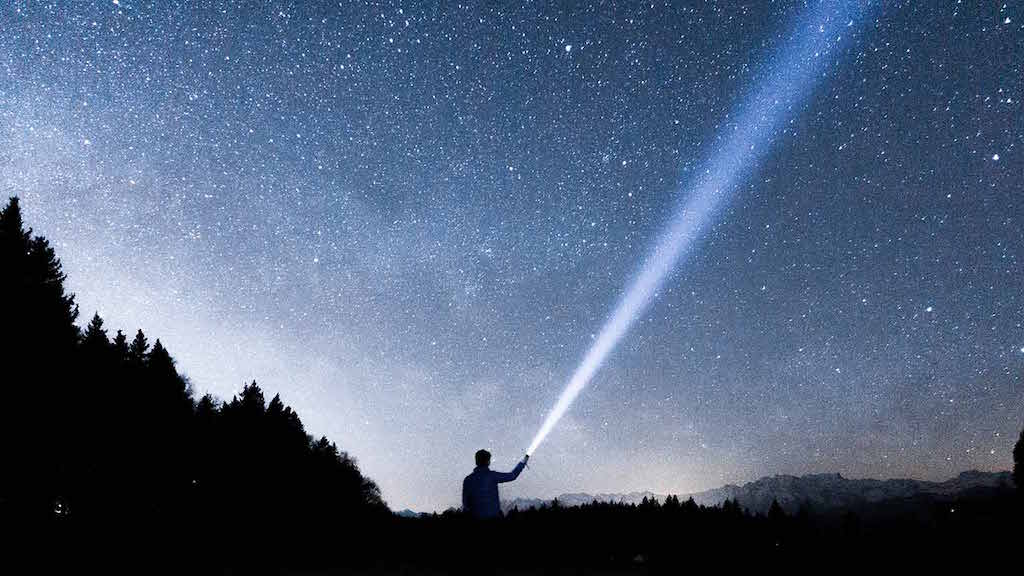By Ash Buchanan for Enlivening Edge Magazine
Why is it that some organisations are able to achieve seemingly unbelievable things in the domains of sustainability and social impact, whereas others using similar practices fail to make a meaningful difference? This article explores why organisations should not only consider ‘what’ needs to be done—but also consider ‘who’ they need to be to fully realise their sustainability aspirations.
I’m a brewer, and love my home brewing. I’m in awe of the process; brewing usually takes half a day to do, and requires a delicate mix of skill and theory. There are many variables: sterilisation is critical; the water temperature needs to be carefully managed to extract sugar from the grain, and care must be taken when preparing and adding ingredients to bring out the desired colour, aromas and flavours.
One thing many people don’t appreciate about brewing is that it’s a chemical reaction. Making beer isn’t a simple process of mixing things together. It’s a transformational process —converting sugars into alcohol—something that anyone today can easily master with the right experience, tools, and ingredients.
But it wasn’t always this easy. Although people have been brewing beer for thousands of years, for most of that time, the catalyst for fermentation was a mystery, a “practice blindspot” of the brewing process. Some families and businesses were able to mass produce beer, whereas others who had all the same ingredients and techniques simply couldn’t get it to work. It wasn’t until 1857 when Pasteur discovered the active catalyst for fermentation was yeast, that brewing underwent a fundamental paradigm shift, making it accessible to everyone.
In many ways, I feel this story is symbolic of where we are today with the sustainability challenge. It’s quite likely we have all the right bits readily available, and the real challenge now turns to discovering how we can overcome our “practice blindspots” to catalyse a better future.
In this article, I want to share what is emerging for me as one of the major blind spots of sustainability—the inner condition of our organisations. How do different organisations, with different leadership styles, worldviews, values, and culture influence real-world sustainability outcomes? And how can organisational development help to close the gap between sustainability aspirations and performance?
Common sustainability practices
Many have studied and grouped the common sustainability practices that are in use in the world today. This includes SustainAbility (2005) and Reed (2007). Figure 1 summarises their broad groupings.

While there are many takeaways possible from this figure, the one I want to zoom in on is their limited acknowledgement of interiority. Sustainability is often seen as a problem ‘out there’ in the world, which can be solved with expertise, rating tools, and innovation. There is a tendency to overly focus on what needs doing, e.g., a new green building, more efficient technology or new sustainability policy. But, as well articulated by Jason Mc Lennon, International Living Future Institute (2013)
“We need to change the way we think… when we shine a light on all the things that need to change… what we find most profoundly, is that it’s us of course that has to change, that the light shines most brightly back in our eyes”. – Jason Mc Lennon
There is a psychological and social transformational element, ‘in here’, in who we are as people and organisations which is rarely acknowledged. So while an organisation may use a sustainability practice such as Net Positive or Regenerative Development, their ability to successfully realise its potential is intimately interwoven with the inner condition of their organisation.
It’s for this reason that we will now take an organisational developmental perspective, to shine a light on this blind spot and provide a more comprehensive view of the sustainability challenge.
Laloux’s organisational development theory
Similar to sustainability, many have studied and grouped the common ways organisations evolve, and in Figure 2 we have summarised Laloux’s organisational developmental theory from Reinventing Organisations (2014).
What’s particularly interesting to note is that as each stage of organisational development evolves, it transcends and includes its previous stages. With each stage of evolution, comes new leadership styles, breakthroughs, and values, representing a paradigm shift in the ability to adapt and remain resilient in the face of uncertainty.

The later an organisation’s stage of development, the better it is able to foster systems-awareness and collective wisdom, which in turn lead to a more sophisticated ability to perform. Development enables organisations to liberate more human energy, widen their circle of compassion and contribution, and unify a diverse pool of talent.
Comparing the developmental stages with the different groups of sustainability practices presented, Figure 3 reveals a striking correlation between them. It can be suggested that as organisations have gained new perspectives and developed new worldviews, new ways of making sense of sustainability have become available, leading to the emergence of new practices. Hence organisational development is a good candidate for explaining why these distinct sustainability practice groups have emerged.

Illuminating sustainability practice blind spots
“The success of an intervention depends on the interior condition of the intervener” – Bill O’Brien
The great value I see in Laloux’s work is its ability to shine a light on the inner condition of an organisation—on ‘who’ organisations are—and thus their potential for catalysing sustainability practice outcomes.
By including this developmental perspective side by side with sustainability practices, it becomes clear that the potential of any given sustainability practice is interwoven with the inner condition of the organisation—because what’s inside the organisation—its values, beliefs, leadership practices, and higher purpose—manifests outside in the way it expresses its approach to sustainability.
Therefore, to close the gap between aspirations and performance, organisations should not only consider ‘what’ practices they want to implement, but they also should consider ‘who’ they need to be to fully live them. ‘Who’ an organisation is and ‘what’ practices it uses are interconnected partners in realising potential.
There is also scope for expanding this framework beyond ‘who’ and ‘what’, to include ‘why’ ‘how’, ‘when,’ and ‘where’, but that’s the topic of another article.
The key takeaway is this: what better way to promote healthy expressions of sustainability practices than to leverage the catalytic potential of organisational development?
Thoughts?
What do you think? Does this way of talking about the sustainability challenge work for you? My intention for writing this article was to start a discussion, and develop better ways for talking about our sustainability blind spots. If you have any comments or feedback, I would love to hear from you.

Ash Buchanan (@CohereSustain) is Director of Adaptive Development at Cohere, Melbourne, Australia.
References
Laloux, F. (2014). Reinventing Organizations: A Guide to Creating Organizations Inspired by the Next Stage of Human Consciousness: Nelson Parker.
McLennan, J. (2013). Falling in love with life. Paper presented at the Living Future unConference.
Reed, B. (2007). Shifting from ‘sustainability’ to regeneration. Building Research & Information, 35(6), 674-680.
Scharmer, C. O. (2009). Theory U: Learning from the future as it emerges: Berrett-Koehler Publishers.
SustainAbility. (2005). Gearing Up From corporate responsibility to good governance and scalable solutions.





Just wanted to add, this article would not have been possible if it wasn’t for the amazing support of Gerard Bruitzman from the Integral Institute Australia. Thanks Gerry!
Great article Ash.
In my opinion the biggest blind spot to sustainability is the adoption of neo-liberal economics in the mainstream, and companies and governments basing decisions on a discounted future value that considers the environment a resource to be consumed.
That aside the changes need to come from all levels, and unfortunately humans are very resistant to change. It feels like everyone is waiting for leadership. What confuses me is the difference in response to CFCs and the hole in the ozone layer, or the water shortages in Victoria – where lasting changes were made across society in general; where is that society-wide response to global warming and our limited resources? Is the challenge too large and scary, is a regenerative future painted too bleakly?
Mature organizations that are inclusive are in a much better position to allow the sustainable changes to thrive, precisely because they nurture change and accept it as a requirement for success. Recently I suggested that as a sustainable measure a company could provide lunches to workers, reducing food and packaging waste, this was eagerly taken on board; but they baulked when I suggested that the lunches be restricted to vegetarian or even vegan options as a way to educate staff about the impact of agriculture on the environment! Perhaps it isn’t until organizations are Evolutionary that the sustainability changes can be made.
Hi Will. Totally agree – the economic system has a bit of evolving to do in order to recognise and address the future in a generative way.
I feel you on your last comment. I have had similar experiences many times as well. Do you think that organisation had a good appreciation of ‘who’ they were ‘being’ when they made that decision? I’m really interested in how we can take everyday situations like that and explore how shining a light on their worldview can help shift ‘what’ organisations ‘does’.
Thanks Ash,
Your contribution certainly picks up on the need for any organisation to be well connected to its organic potential, rooted in “who” they are as a collective, not just on the information or data they may manage, or even an ideal they may declare, or activities they may initiate or support. “Who they are” within the identity of an organisation is a difficult culture to groom or cultivate, as no matter how rigorous their position of sustainability is, what will inevitably filter down from the top is the needs of stake holders, share holders, and essentially, the profitability of the enterprise. Maybe the reasons behind one organisation succeeding in their efforts over another is merely the serendipitous nature in which boards and management teams come together, and find within their collective mindset, there is a greater sense of relevance and conviction to bridge the gap between declared and espoused behaviour, in any area, but in particular policy and actions regarding sustainable practices.
I think that community awareness is essential, for it is from within and out from such levels of endemic connectivity, that the real conversion takes place. Organisational mind set is somewhat of an end product, a collection of an established sum. Cultivate change in the suburban street and this will undergird changes in attitude up the line. I once watered office plants for a large multinational organisation, and one day met the CEO of the company in his office at 6.00am in the morning. He noted with pride that he comes to work each day from an air-conditioned house, in an air-conditioned car, to an air-conditioned office, and flies in air-conditioned planes to air-conditioned conference centres staying in air-conditioned motels. His sense of disenfranchisement and disconnection from the world that requires a passionate and visceral encounter with the need for sustainable practice could not be more severe.
So further to your premise, I would see that organisational change from within, and any aspirations towards sustainable practice, is only part of the potential regime of success towards truly sustainable initiatives. Conversion needs to happen at home. But I get that this is another conversation that goes well beyond the truths you have elucidated.
Hi Peter – oh yes – the great disconnection, humans seeing themselves as separate from nature. I feel there is a ‘chicken and egg’ thing going on in this situation. The environment informs the worldview and the worldview informs the environment – creating a kind of self sealing culture. How can organisations like you mentioned see who they are in the systems they belong to and nurture healthy shift’s in both their worldview and their environment? How can people start to see themselves as Nature?!
Really glad you’re bridging the gap between OD and sustainability. However, I think both areas have blind spots. OD practitioners want to be seen as agnostic in their values so they can work with the values mode of the organisation. There seems to be an unwillingness in OD communities to take on the global challenges facing humanity, whether the changes are happening within organisations, or are pan-organisation / pan-sector. But if applied to sustainability, how far do we, OD practitioners take it, to the extend where the original intent and purpose just collapses into a dynamic where the change is no longer valued? On a slightly separate note (with hope these points will find synthesis) dialogic OD approaches, change happens through conversation. That means OD practitioners need the somatic and relational skills to connect with different values modes and make bridges between them in the moment, whilst holding a space that’s congruent with a shared purpose. And often that purpose will shape-shift, and any anchors to unity or common ground become chaotic at a deeper level. OD practitioners have to be hold that space at the edge, remaining open to the fullness of experience as it unfolds, fully trusting that whatever happens can be part of the creative process if they choose it to be.
Hi Jules, thanks for sharing your insights – I’m quite new to OD, so its great to see it from your perspective. I’m my line of work, we rarely go anywhere near OD, so I was personally was hoping to cross that line first. But i can imagine once we do, we will need to address and explore all of the points you have raised. I wonder if / hope bringing these to fields together will lead to some exciting new synergies. Time will tell 🙂 And yes, this is going to really challenge both sustainability and OD practitioners alike to hold a new type of the space.
And you have intrigued me – are their any OD practitioners out there that are bridging net positive / regenerative practices and green / teal organisation development. I’d love to hear from you!
Hey Ash. Happy to jam with you on joining the dots. The integral community is there already, and of course CSR has had ties to OD in the past (although I don’t know the story). Not only that but environmental management in academia circles have taken to social learning approaches to disrupt linear approaches like ISO14001. I was studying new research papers on this in 2013. However, I get the sense it is still embryonic and I sense an undiscussables in the OD community around it, as mentioned before. I think what we need is a system map and repository of case studies perhaps, and overall a more explicit expression of the overlaps. I myself felt that urge to be the first to bridge the gap – my studies were environment and media because I wanted to change our culture. Then I learnt about OD as a methodology, and now I’m building my OD portfolio, looking to focus on SD. I checked myself and its in the collaboration and transparency that synergy around this will crystallise. See first: Barratt Brown, Matthew Rich-Tolsma, Anouk Brack and from academic circles e.g. http://www.sciencedirect.com/science/article/pii/S0959378009000429 (I can send you some papers on linkedin or email me). The other area we need to bridge is sustainability communication: Futerra, Climate Outreach, http://www.sb-communications.net/. Because its in the dialogue that change happens.
One thing I’d urge you to do is read Barratt Brown’s dissertation. Its a pivotal piece for this movement. http://integralthinkers.com/wp-content/uploads/Brown_2011_Conscious-leadership-for-sustainability_Full-dissertation_v491.pdf